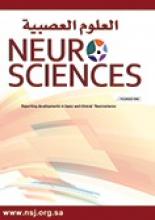Abstract
OBJECTIVE: To evaluate localizations of cyclooxygenase (COX)-1 and COX-2 following traumatic brain injury (TBI) and the effects of 2 therapeutic agents on COX inhibition.
METHODS: Forty rabbits were used in this study for developing a TBI model and divided into 4 groups (n=10) at Afyon Kocatepe University School of Medicine, Afyonkarahisar, Turkey in June 2004. Differential cellular COX-1 and COX-2 protein expression profiles were analyzed following TBI, and the effects of 2 therapeutic agents, indomethacin and nimodipine, on COX inhibition were evaluated immunohistochemically.
RESULTS: This study revealed that COX-1 and COX-2 protein expression were significantly increased in vascular endothelial, smooth muscle cells, and CD68+ microglia/macrophages following TBI. Indomethacin inhibited the COX expression in glial cells more than nimodipine, however, both did not affect endothelial COX-1 and COX-2 expression.
CONCLUSION: The restricted accumulation of COX-1 at the perilesional area points to an acute inflammatory response and the role of COX-1 in TBI. This study revealed that COX-1 expression should be a pharmacological target following TBI, and COX-2 should also be evaluated in this aspect, and indomethacin is more effective than nimodipine for blocking COX-1.
- Copyright: © Neurosciences
Neurosciences is an Open Access journal and articles published are distributed under the terms of the Creative Commons Attribution-NonCommercial License (CC BY-NC). Readers may copy, distribute, and display the work for non-commercial purposes with the proper citation of the original work.






